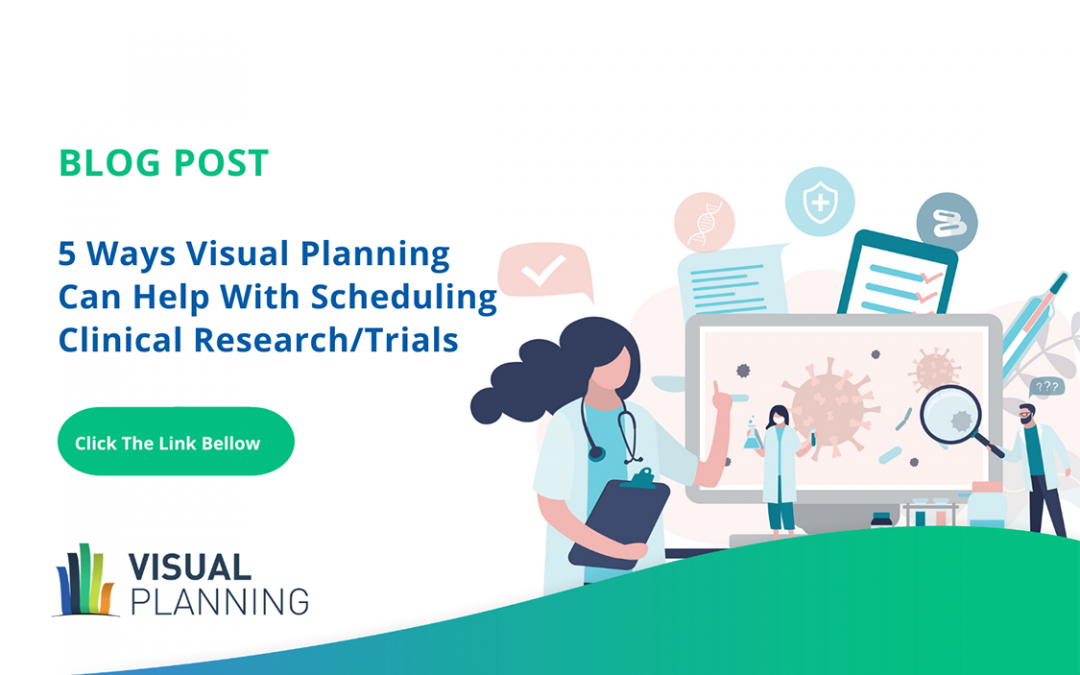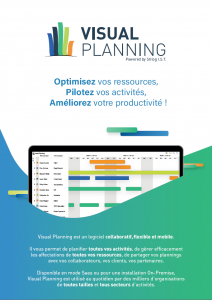Clinical trials and research projects might come with a lot of moving parts and heavy regulations, but at their core, they’re still projects. Successful completion of these unwieldy tasks requires strong project management capabilities, and you can help ensure that with the right supporting software. Find out more about how Visual Planning project management solutions can help with your clinical trials or research when you follow the tips below.
1. Choose a Project Manager to Help Administrate
Experienced project managers help ensure goals are actionable and measurable, projects are well-defined, and that everyone on the team knows which task comes next for them. They also keep an eye on budgets, push team members to complete items in time for deadlines, and help the entire team corral a project to avoid scope creep.
Clinical researchers, medical experts, lab techs, and others typically involved in this type of project don’t tend to watch the bigger picture because they’re trained to look at the details — to find what really matters in the minutia of the data; and that’s extremely important. However, having an experienced project manager working with these team members can help bring it all together and organize the project for success.
In most cases, the project manager must use a framework to complete the job. That framework is typically a project management software that the entire team can turn to for communication, direction, and project scheduling.
2. Create a Definition of Your Research Project and Set Goals and Milestones
The first step a project manager typically takes is to prompt the research team to define the project.
- What problem is the team trying to solve or what question does it want to answer?
- What is the form that the answer should take?
- What metrics are important to this answer, and what measurements are they defined by?
- What type of data does the team need, and what’s the plan for accessing it?
- Are there regulatory or compliance challenges that need to be factored in?
- Is the team able to work with data from existing research, or does it need to conduct a clinical trial for new data?
- What sample size is required?
- How will the team know they’ve reached the end of the research project? What is the definition of success for this project?
Failing to answer all of these — and other — questions can cause a research team to lose sight of the goal halfway through. That leads to scope creep — where the team attempts to answer increasingly large or irrelevant questions as they come across different information or rabbit holes in the research process.
The seeking of knowledge can always go on forever, so research teams must know where this research project stops so they can finalize results for practical use. Ideas and threads that come up within the research, but aren’t within scope, might need to become new projects in the future.
This type of project management is only effective when everyone can easily return to the project definition and documented answers to the above questions. Project management software makes this process simple.
3. Set Up Communication That Keeps All Team Members in the Know
Once research teams set off on their tasks, it might be easy to become lost in the nitty-gritty details of each workflow. However, it’s critical to remember that all these tasks work as building blocks for the overall project and the development of answers or solutions.
Staying connected with constant communication helps drive the most accurate, efficient, and successful project possible. Project communication might include:
- Milestone check-ins, which are scheduled meetings at each milestone within the project. These allow project participants to present their progress, findings, and challenges so far to project leads and other stakeholders. They also let leadership redirect project resources or make decisions about the future of the project based on new data.
- Regular project meetings, which are scheduled check-ins every week or two that help keep the project team on task and allow time for researchers to brainstorm as a group.
- As-needed communication to push and pull tasks through workflows, identify and remove obstacles, and report findings.
Outside of a good software solution, as-needed communication often gets pushed to email or channels such as Slack. While any communication is better than no communication, these less-structured channels create project risks. They might leave critical people out in error, and it can be cumbersome to go back through these communications to understand where each leg of a project stands or what happened during a certain phase.
A project management solution with built-in documentation and communication features keeps all the important information readily accessible to the team to help mitigate these issues.
4. Invest in Transfer and Recruiting Options if Research Requires Patient Participation
For clinical trials that require patient participants, success depends on more than excellent data gathering and analysis. In fact, you can’t even get to gathering data if you don’t have participants.
Gathering the right participants for a clinical trial requires a mash-up of marketing, customer service, and health care intake that can be difficult to manage without the right technical solutions. Visual Planning offers a variety of options to help you:
- Create parameters for intake
- Work as a team to generate marketing and messaging to target referral sources
- Accept referrals and evaluate patients for participation
- Enroll acceptable candidates in the trial
5. Provide Excellent Customer Service for All Stakeholders Throughout the Process
One often overlooked area of any project is customer service. No matter what type of answer or solution you’re working toward, your project has customers. And, in the case of clinical trials, you might have multiple customers that pull on different areas of your effort. Some examples of customers include:
- Internal stakeholders, such as the executives or other leaders who are championing your project. To these customers, you owe regular reports on progress, and answers at the end of the project whether you were successful or not.
- External stakeholders, such as stockholders or owners. While project teams don’t typically report milestone progress or other minutia to such stakeholders, they might be required to provide summaries or final information. Certainly, you owe it to owners to maintain project budgets, including records of expenses, and manage project finances and resources appropriately even if stockholders will never see those details.
- Study participants, such as patients or people who make their personal data available for the purpose of this research. The type of customer service you might provide participants can range widely but may include ensuring privacy and confidentiality of personally identifying information and ethical use of data. Communicating appropriately about the trial, managing deliveries of medications or other research-related supplies, and providing clear, helpful instructions and support are all other aspects of customer service that might be required in a clinical trial.
Teams dealing with large-scale projects that involve a lot of customers might want to invest in a CRM system. For example, if you have hundreds of patients involved in a clinical trial, a CRM system makes it easy to push notifications to relevant parties, manage data such as patient demographics and response to treatment, and communicate regularly with the right providers, who may be helping you work with patients during the trial.
Ultimately, the type of solution you need will depend heavily on what type of research project or clinical trial you’re running. But the bottom line remains this: Without project management solutions, you run the risk of coming in over budget, beyond deadline, and without a sufficient solution to provide ROI for the money spent on the project.
Manale is a passionate about digital marketing. She joined STILOG I.S.T in 2018.
She brings SEO & SEA expertise, email marketing and creative content marketing to create a great brand experience for Visual Planning customers.



